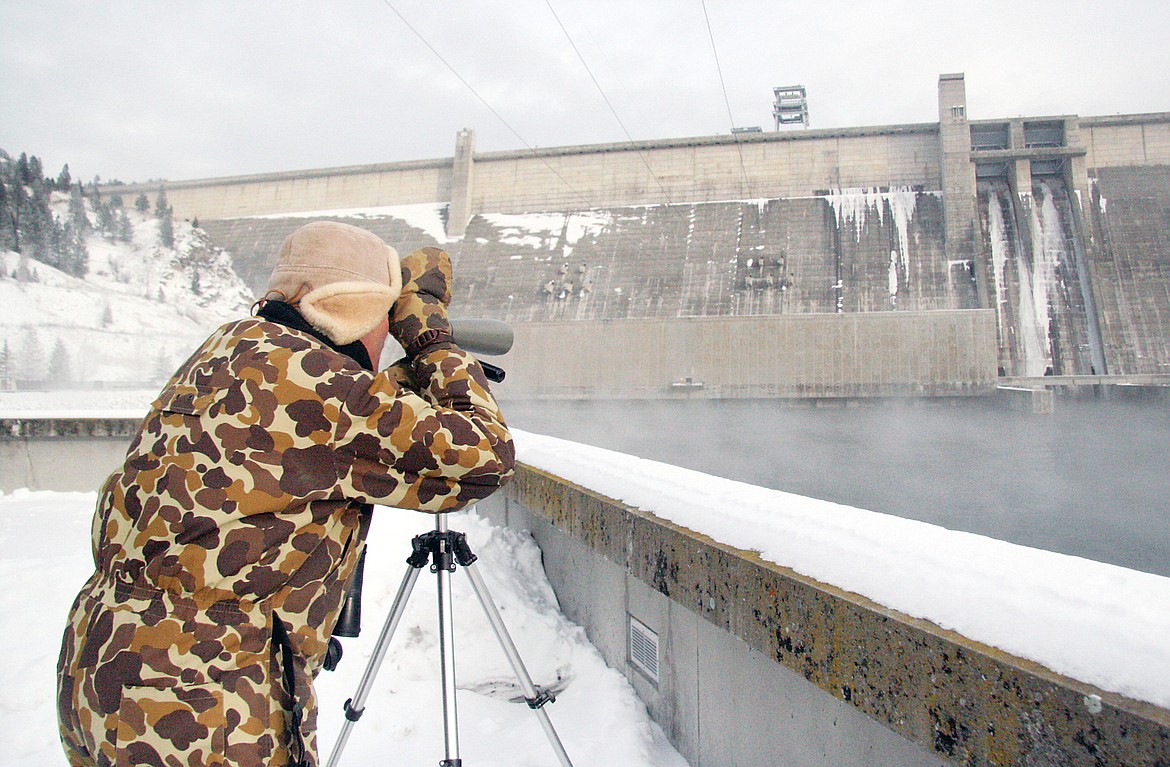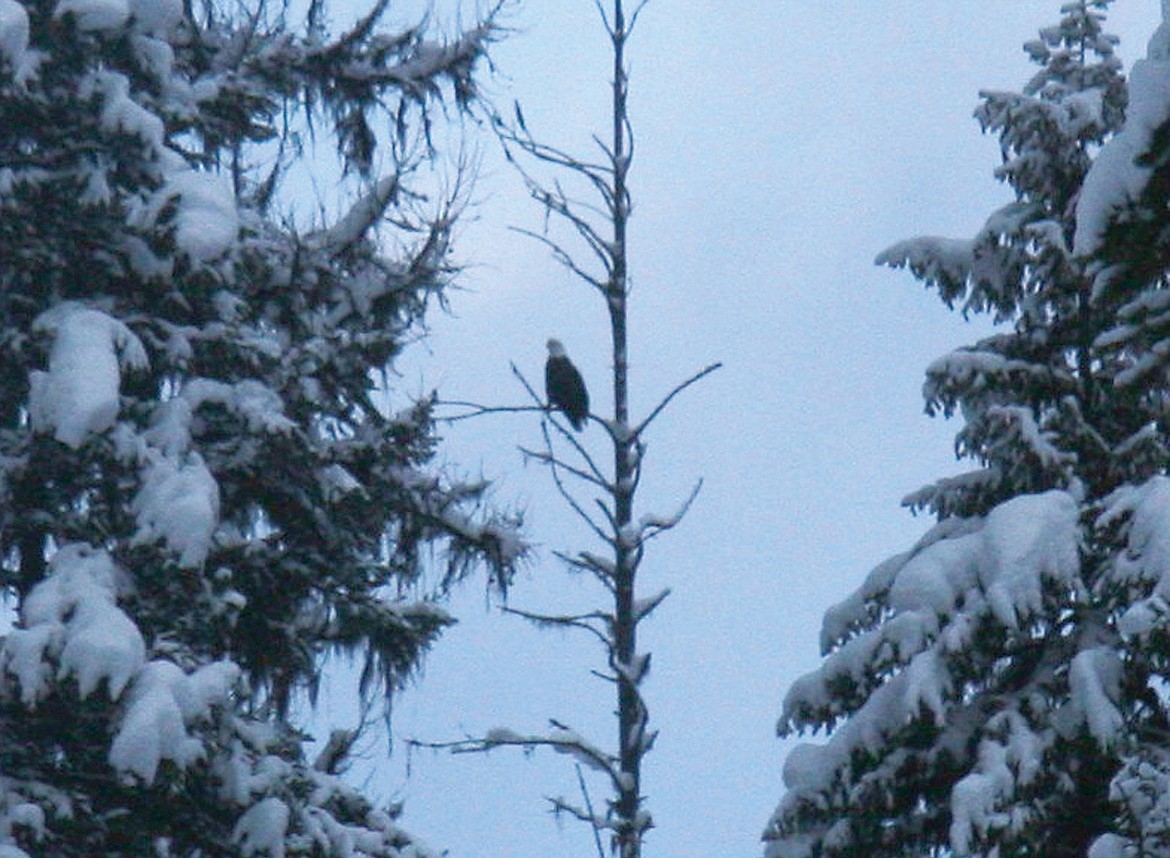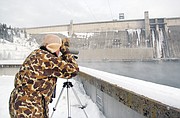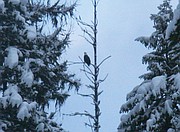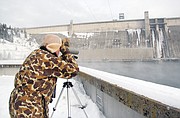Birding: It's not just about the birds
“I’m a birder till death,” Gene Reckin said the day before he ventured out for an entire day of bird watching. The low temperature he’d see the next day would be negative eight, and he’d be outside from 8:30 a.m. to 5 p.m.
“For whatever reason, birds capture people’s imagination and interest,” he said.
A retired high school Advanced Biology teacher at Libby High School, Reckin is an avid bird watcher, organizing the Libby area Christmas Bird Count for the past couple of years.
Every year since 1900, groups of birders across the U.S. have ventured out into the cold, brisk air to count the total amount of birds and bird species they see for the National Audubon Society Christmas Bird Count.
Reckin, along with a dozen other birders in the Libby area, are among them.
Counting birds in the winter may seem ridiculous, since there’s fewer species in the northern states during that time. The county also doesn’t have the diversity that the rest of the state has, like sage grouse and sandhill cranes found on the other side of the Continental Divide.
But this small group of birders recordings are simply a microcosm that will get thrown into the giant over-100-year-old National Audubon Society’s database.
“If we were doing this in the spring, we’d have a lot more birds,” Reckin said. “But what happens is, the birds that leave here in the winter, get counted by someone else down south.”
On a typical count, the birders will split up to different locations in the area where they know that they’ll see birds, some will even float down the river in the cold air.
The first Christmas bird count recorded in the Libby area was in 1926. Following that, birders came out from 1951 to 1959, from 1980 to 1982 and 1984 to 2016.
This year was one of colder ones, but despite the sub-zero temperatures they had a good turnout. With a total number of species being 42 adding up to their total number of birds, 1320.
The most common birds that they’ll see during the Christmas Bird Count are waterfowl — such as mallards and common goldeneyes, common mergansers and bufflehead ducks. Since the Libby Dam creates an open water source, many of the birds hunker down for the winter, including eagles.
The dam is just one of the places Reckin went on the count day, armed with a pair of binoculars and layers of warm clothing, counting the number of waterfowl he saw feeding next to the dam.
Reckin’s degree in college was Wildlife Biology, and after graduating he taught Advanced Biology for 35 years at Libby High School, during which he would teach a unit on birds that included bird watching.
In 1980, he started participating in the Christmas Bird Count. Reckin has since then organized the count for the past couple of years.
“In those days, we had around 30 birders that were the core and really into it,” Reckin said. “Sadly what’s happened is there’s just not the enthusiasm there anymore as there had been in the past.”
Reckin said that in those days, they had some birders that would be out for 24 hours, from midnight to midnight, watching birds.
Now the group has dwindled to around 13, all above the age of 50.
“I think what happens is some people become intimidated,” Reckin said. “They think, ‘well I don’t know any birds, what can I contribute?’ The truth is, you don’t have to know a bunch about birds. On a count like this, we’ll pair people who know their birds with people who don’t.”
Birding, Reckin said, is a lot less intimidating than people expect, as just a process of elimination. Birders will take the bird book, eliminate the chunk of birds that don’t live in their area during the winter, eliminate the birds that aren’t found in the habitat they’re in — on a lake, high in a tree or on a roadside — and then they can look for characteristics like color, wingspan, beak and size.
Being a birder doesn’t require any particular degree or experience, Reckin said they have people from all sorts of backgrounds.
“Sometimes we get people who are former Forest Service workers, who that’s their interest,” Reckin said. “But then you have other people who don’t have any kind of background like that at all. They just see these things flying around outside and become interested.”
An interest in birds can lead to a deeper understanding of the world, he said.
Reckin has seen the changes in the environment reflected in the birds. Many birds now, Reckin said, end up arriving earlier and staying later. Sometimes they’ll see American robins here in February, and Reckin noted that when he moved here 30 years ago, he never saw them here that early. A few years ago, he had mourning doves that he saw at his bird feeder all winter — a bird that would always migrate away in the winter before.
“It’s like the old saying of the canary in the mine,” Reckin said talking about the miners who would carry canaries into mines with them to help detect poisonous gas, “You get a sense of what’s going on in the environment by looking at that little guy. It’s a little barometer. You just watch that bird because he’s really sensitive, and if things change — you’re going to see it right away.”
People are starting to lose that connection and communication with nature, he said, as they spend more and more time indoors and less time in nature.
“Quite frankly, I become more frightened all the time about how disconnected people are from the natural world,” Reckin said, noting that people learn about the world by being in it, not just watching it on television. “People who don’t walk around in nature have a lesser understanding of why habitat is important and why clean water is important.”
While outdoor activities like birding are important, Reckin said, they are also an escape.
Birding is not just about the birds. In fact, Reckin said it doesn’t matter how many birds he’ll see on a bird walk, he’ll just be glad to be out there. There’s some days, Reckin said, in which he goes on bird walks and doesn’t see the particular bird he’s looking for, but he’ll still have a great day.
He often compares it to hunting. Many hunters, he said, will still say they have a great day even if they didn’t shoot or even see anything.
“It’s just a great day to be out,” Reckin said. “It’s an excuse to get out and take in nice country. You’re just more mindful. You’re quiet. You’re paying close attention to what’s going on around you. It’s fresh air in beautiful country. That’s what I love about it.”
Reckin is currently thinking about rallying a new group for next year, by maybe hosting adult-ed classes and field trips in the fall.


